Passing Capel’s Mill, the canal hugged the north side of the valley and then crossed to the south via an aqueduct near to the Arundel Mill pond. This section of canal was closed in 1933 and was restored between 2011 and 2018.
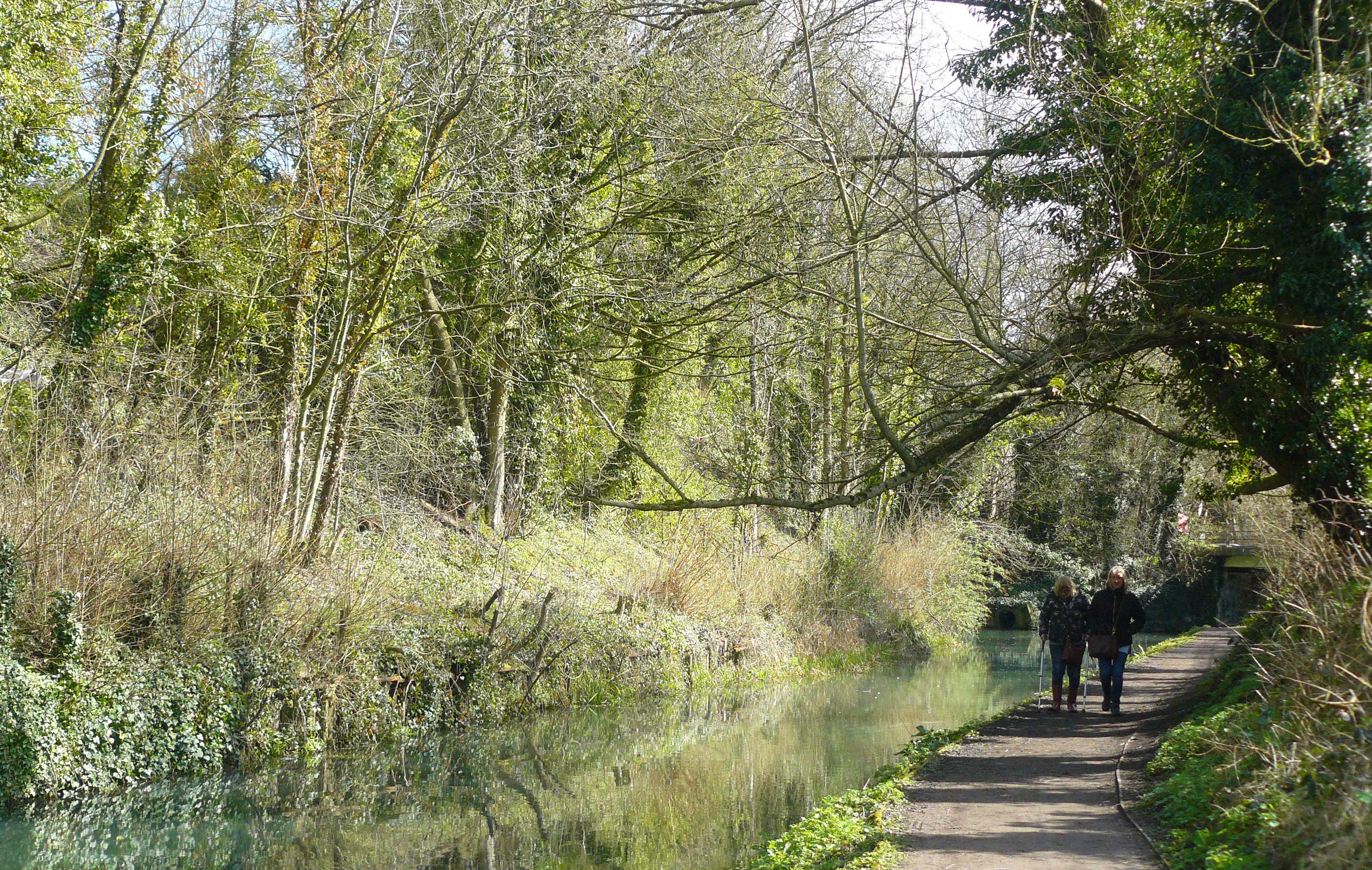

North-west of Capel’s Mill, the canal runs though a steep-sided cutting that is liable to landslips. A bulge in the piling marks where, after heavy rain in 1894, a 35 yard length of the embankment slipped into the canal and a large tree fell right across to the towpath. At the top of the embankment, a section of the down railway line was left hanging in fresh air.
The tree was soon removed, but clearing the spoil from the canal was more difficult, particularly as the railway company’s men were tipping ballast on the top of the slip to support their rails!
As dredging from a boat was so slow, it was found necessary to drain the pound on Sundays so mud could be dug out by hand. Even then, it was five months before a fully laden barge could pass.
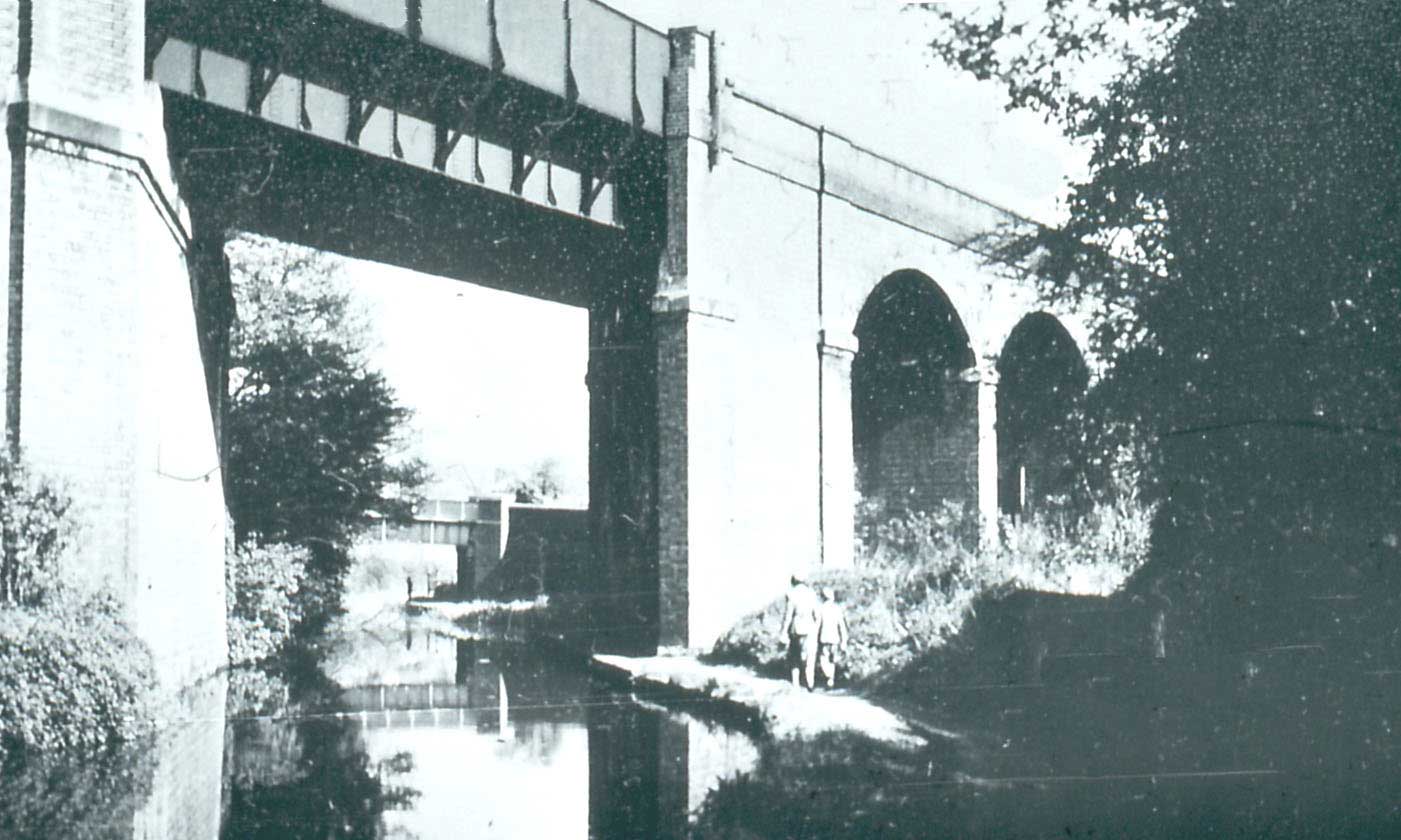

In the 1840s, the Cheltenham & Great Western Union Railway was built along the Frome valley, posing a serious challenge to the prospects of the canal.
Where the line crossed from one side of the valley to the other, engineer I K Brunel built a huge timber viaduct which ran through the site of Capel’s Mill. This viaduct was replaced c1870 by the brick and iron structure illustrated.
In the distance can be seen Capel's Mill Bridge which provided access to the mill from London Road. There was a wharf near the bridge where coal was delivered to the mill.
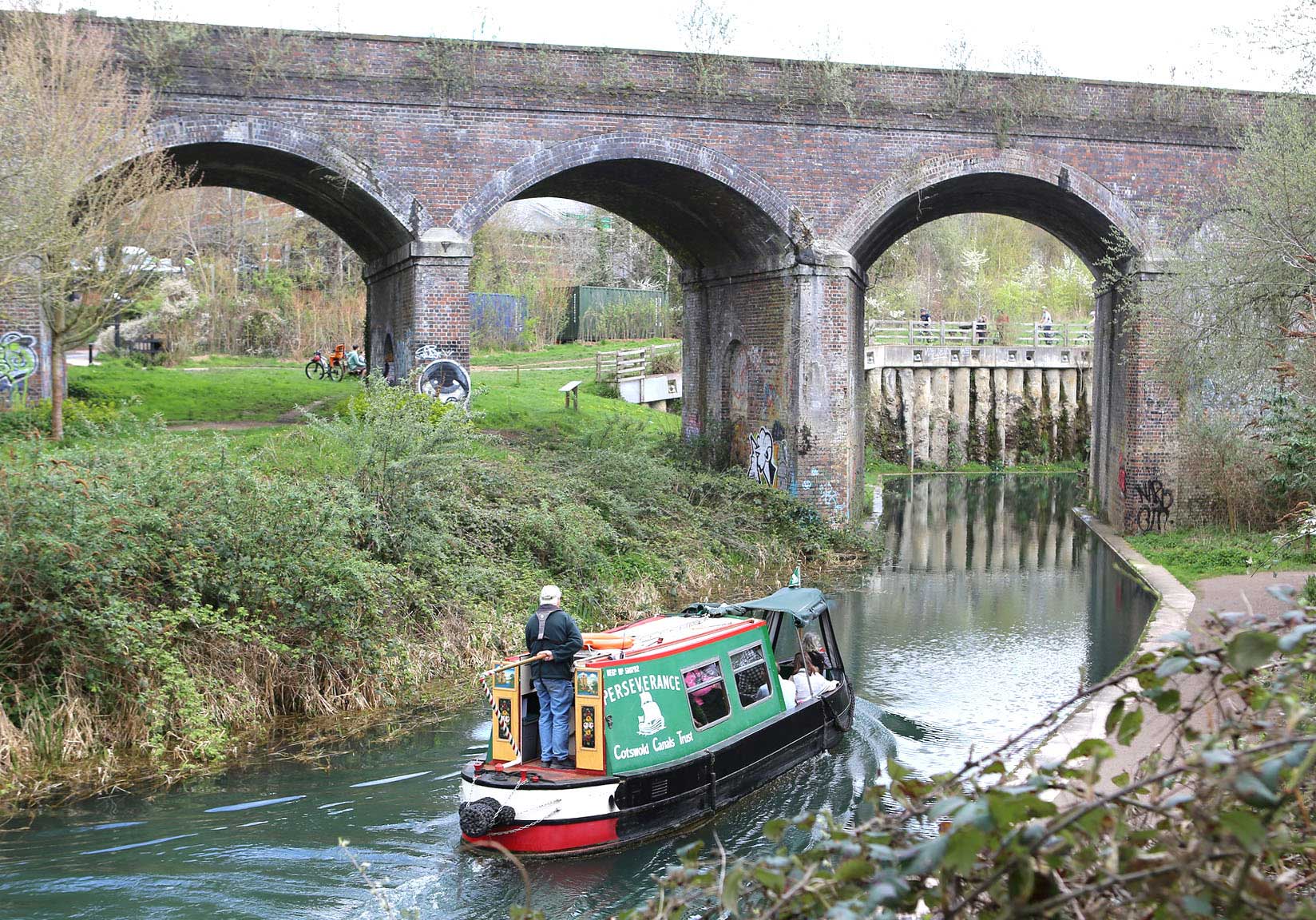

When this length of canal was restored in 2013, it was put though a different arch in Capel’s Mill Viaduct because the A419 Stroud Southern Bypass had taken over the original canal route. Other arches to the right still contain remains of Capel’s Mill.
The new route also cut through a huge refuse tip, and the piles for retaining the tip can be seen through the arch.
To the east of the viaduct, the canal rejoins its original route and crosses over the River Frome to the south side of the valley. The towpath also changes sides – from south-east to north-west. Arundel Mill has not survived, but the mill pond and dam can be viewed from the towpath, and an eel pass has been installed along the spillway of the weir.
Capel’s Cutting land-slip from TNA RAIL 1170/1, 16 Jun 1895.
Railway viaducts from The Great Western Railway in the Stroud Valley Volume 1 by Mike Fenton.
Arundel eel pass from https://www.stroudvalleysproject.org/news/eel-pass-wins-county-award.
Pike's Shadow
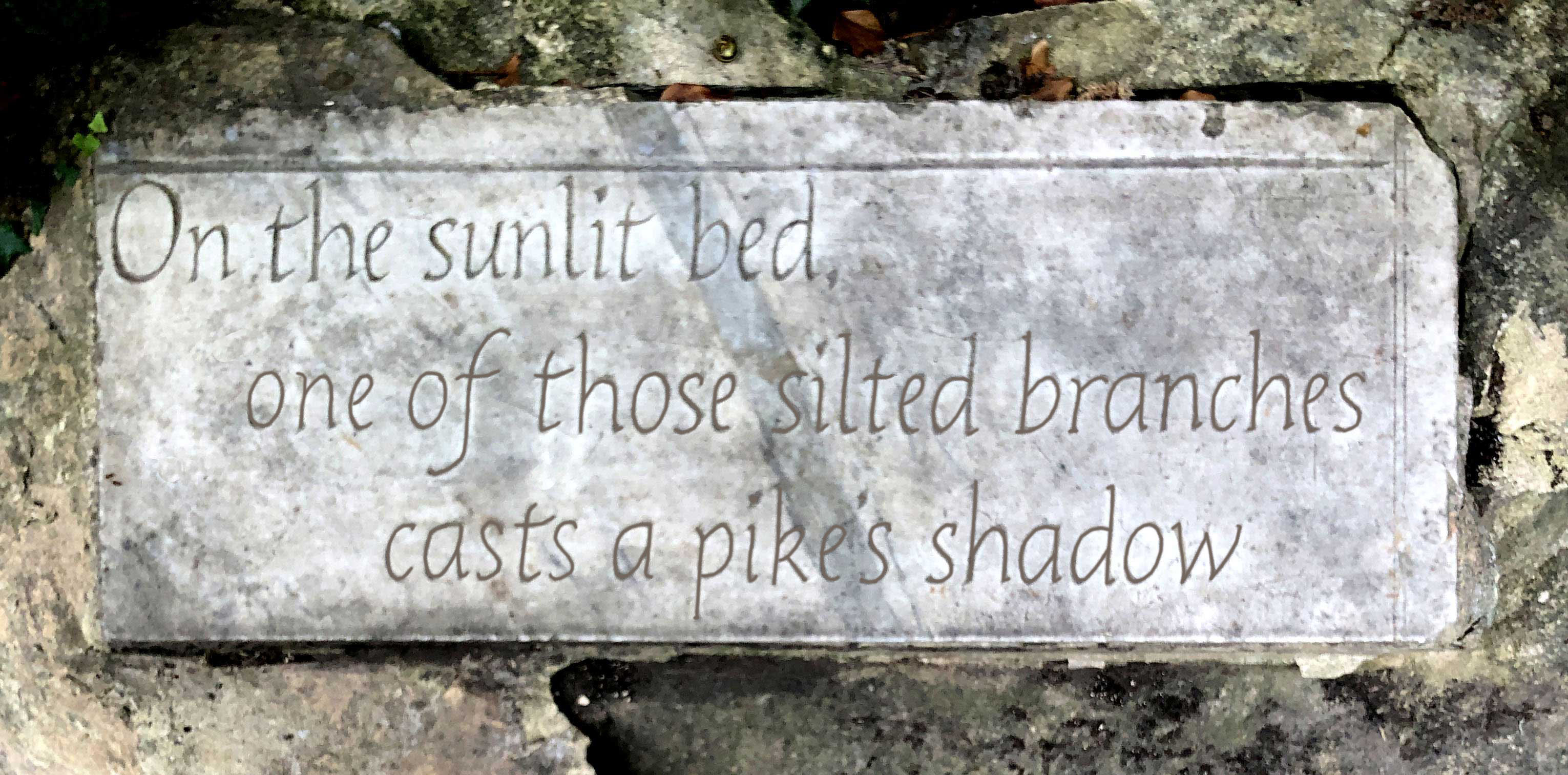

Beside the towpath in Capel’s Cutting is a slate panel engraved with a Japanese Haiku style poem (of seventeen syllables) by Paul Russell Miller.
Brunel's Viaduct
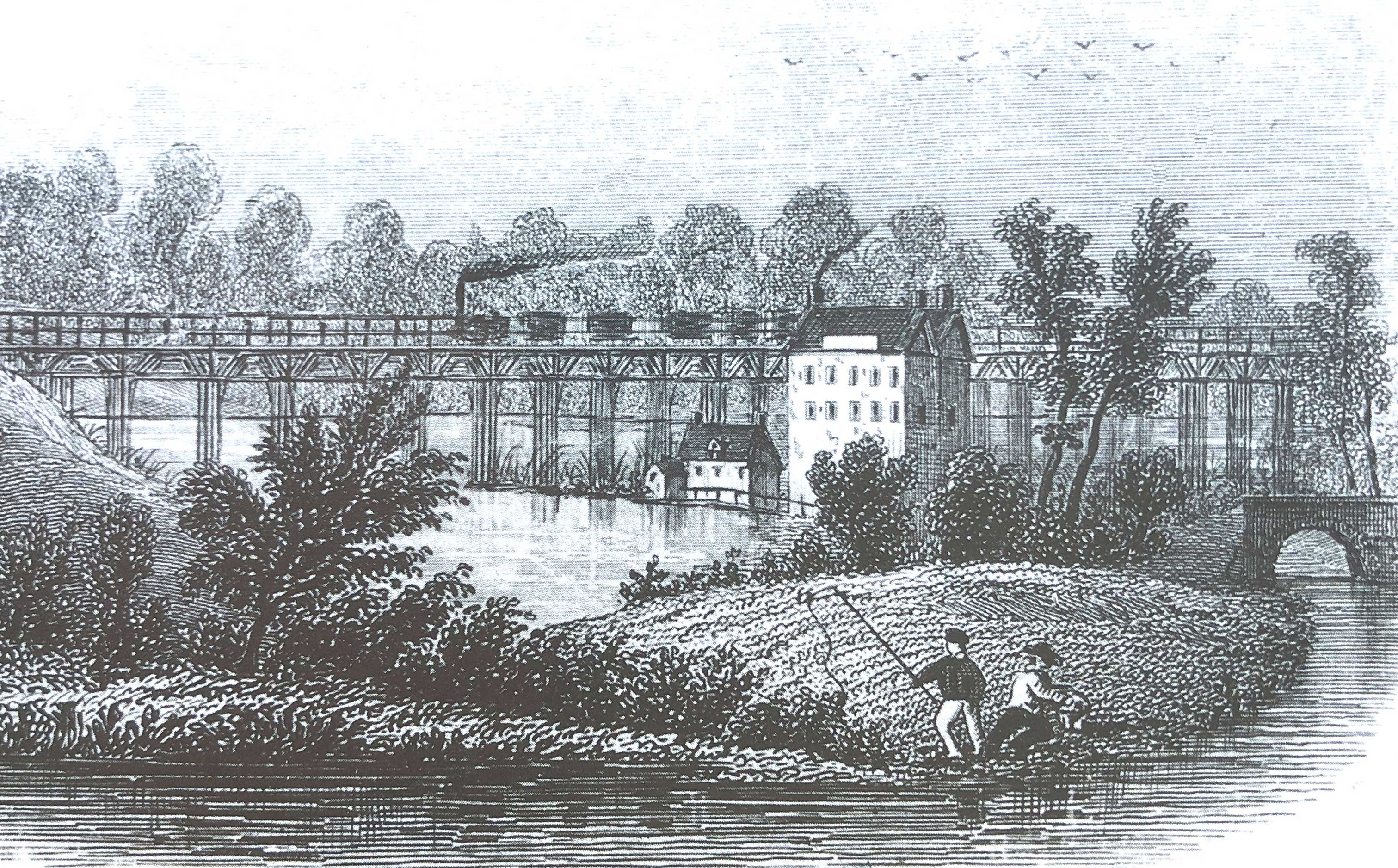

Brunel's original timber viaduct passing Capel's Mill viewed from the canal.